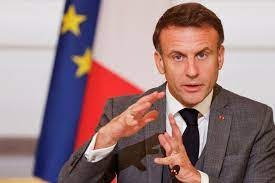Eric Garcetti says NASA will train Indian astronauts shortly for a cooperative trip to the International Space Station
According to US ambassador to India Eric Garcetti, NASA will soon provide advanced training to Indian astronauts so they may launch a cooperative mission to the International Space Station this year or soon after.

Speaking on Friday in Bengaluru, Garcetti said these things at the “US-India Commercial Space Conference: Unlocking Opportunities for US & Indian Space Startups,” which was organized by the US Commercial Service (USCS) and the US-India Business Council (USIBC).
As one of the commitments made at our leaders’ meeting, NASA will soon provide advanced training to Indian astronauts with the aim of organizing a combined endeavor to the International Space Station, ideally, this year or soon after,” Garcetti said.
“And soon, as per a press release from USIBC released here, we will launch the NISAR satellite from ISRO’s Satish Dhawan Space Center to monitor all resources, including ecosystems, the Earth’s surface, natural hazards, sea level rise, and the cryosphere,” said Garcetti.
NASA and the Indian Space Research Organization (ISRO) collaborated on the Earth observation project known as NISAR. You see, we work hand in hand and shoulder to shoulder when it comes to the pursuit of peace, the peaceful use of space, and initiatives like the Artemis Accord.
In terms of wealth and employment, which are major themes of this conference, Garcetti said that entrepreneurs in this field may provide well-paying, high-tech jobs that are accessible to both Americans and Indians.
A framework for cooperative countries’ safe lunar and extraterrestrial exploration is outlined in the Artemis Accords.
Senior representatives of the US and Indian governments attended the all-day event in Bengaluru, including Garcetti, Dr., Chairman of the Indian Space Research Organization (ISRO), and Dr.
S. Somanath, officials from the Indian government, the National Oceanic and Atmospheric Administration (NOAA), and the National Aeronautics and Space Administration (NASA), as well as well-known figures from the commercial space sector, industry players, venture capitalists, and market analysts.
“It is with great pride that I acknowledge the visionary leadership of both India and the US for pursuing this accord, which views the moon as a sustainable location where we can all collaborate,” Somnath said.
The relationship between US and Indian partners in vital technology, particularly in the space industry, is really strengthening.
And I’m very pleased about that kind of interaction, he said, as well as the opportunities for US businesses and industries to link with India in the developing space industry.
USIBC president Atul Keshap expressed hope about the future of US-India space cooperation, calling it a “new chapter” in the two countries’ space alliance.
According to him, this week has been very productive since USIBC and USCS are working together to support these two iCET space deliverables.
The meeting showcases our two free countries’ growing collaboration in space exploration and innovation as leading democracies.
We’re close to reaching incredible milestones and broadening the scope of space exploration beyond our wildest dreams thanks to smart collaborations and cooperative efforts, according to Keshap.
According to USIBC executive director Alexander Slater, “the US-India Commercial Space Conference highlights the importance of fostering strategic partnerships to drive innovation and propel the space industry forward.”
This is the next phase of USIBC’s ongoing commitment to promoting bilateral collaboration between top businesses and startups in both nations in order to create new avenues for employment creation, economic development, and technical leadership.
It expands on the work we did in February in New Delhi to host the second edition of INDUS-X, which encouraged comparable chances for collaboration and innovation in cutting-edge defense technology, the official added.
Senior defense officials from the US and India convened in Washington, D.C., to explore ways to improve their cooperation in space and to pinpoint possible areas of cooperation with the US industry.
At their meeting for the second annual Advanced Domains Defence Dialogue (AD3), officials from the US and India spoke about a variety of bilateral cooperation topics.
Vishwesh Negi, India’s Joint Secretary for International Cooperation, headed the visiting Indian group, while Vipin Narang, Acting Assistant Secretary of Defense for Space Policy, led the American team.
Department of Defense spokeswoman Jessica Anderson said that Narang and Negi explored ways to expand space cooperation and pinpointed possible areas for cooperation with US business at this year’s Dialogue.
The two co-chaired the first US-India principal-level tabletop conversation, which looked at ways to improve collaboration in the space sector, among a group of US and Indian defense leaders.
They decided to use frequent working group sessions to improve AD3.
According to Anderson, the visiting group from the Indian government also had discussions with representatives from the US Department of Defense’s artificial intelligence division, the Joint Commercial Operations Cell, and US Space Command.







